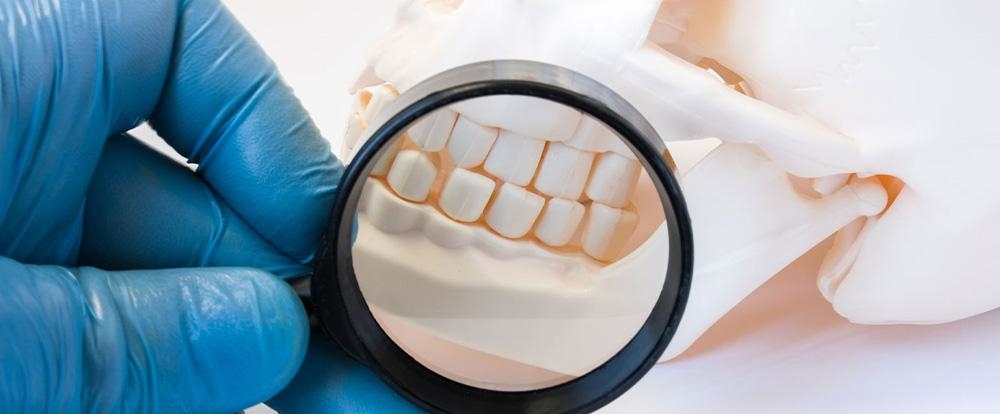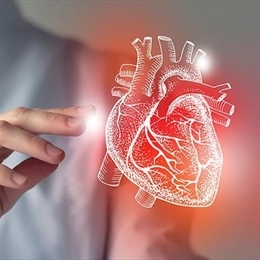Orthodontics Tooth and Jaw Disorder Treatments

Orthodontics is the branch of dentistry that corrects teeth and jaws that are positioned improperly. It is the discipline of achieving near-ideal functioning and aesthetics of the teeth and jaws to improve an individual's quality of life.
No matter the individual's age, untreated orthodontic problems will only worsen. Crooked teeth and teeth that do not fit together correctly are more challenging to keep clean, are at risk of being lost early due to tooth decay and periodontal disease, and cause extra stress on the chewing muscles that can lead to headaches, TMJ syndrome and neck, shoulder and back pain. Additionally, crooked jaw closing and early tooth contact can lead to abnormal erosion on the tooth surfaces, difficulty chewing and speech, excess pressure on the teeth, lesions forming on the root apex, and damage to the supporting bone and gum tissues.
Teeth crooked or not in the right place can also detract from one's appearance. The benefits of orthodontic treatment include a healthier mouth, a more pleasing appearance, and teeth more likely to last a lifetime.
Only your dentist or orthodontist can determine whether you can benefit from orthodontics. Based on diagnostic tools that include a complete medical and dental health history, a clinical exam, plaster models of your teeth, and special X-rays and photographs, an orthodontist or dentist can decide whether orthodontics is recommended and develop a treatment plan for you.
Cases that require immediate treatment:
• Unbalanced face and jaw structure
• Breathing from the mouth
• Bad habits such as thumb sucking, nail biting, cheek – lip biting
• Long-term pacifier or baby bottle use
• Difficulty chewing or speaking
• Extremely forward or backwardly positioned jaw structures
• Teeth positioned forward (potrusive)
• Crooked, wrongly positioned, or not visible (buried) teeth
• Early or late milk teeth loss
• No contact between the top and bottom teeth, or having them enclose themselves altogetherA child’s first orthodontic treatment should be no later than the age of seven.
Even though the teeth may appear appropriately lined up, an invisible closing problem may be an issue. Even though the child has passed the age of seven, an orthodontic examination should be arranged. Despite the advantages of having inspections early, most active orthodontic treatments start between 9 and 14.
While orthodontic treatment started at an early age has good outcomes for both the patient and the doctor, orthodontic treatment is also given to adults as long as they have healthy teeth, gums, and surrounding bone tissue. Patients of all ages who meet these criteria will benefit from good results. While the duration of treatment changes from case to case, they can last from 6 to 36 months. This period greatly depends on the patient's growth and development phase, level of deformity, oral care, conformity to treatment, and unity with the doctor. Adaptation to new apparatuses usually lasts 7-10 days.
An orthodontist should, without question, perform orthodontic treatment.
Many different types of appliances, fixed and removable, are used to help move teeth, retrain muscles, and affect the growth of the jaws. These appliances work by placing gentle pressure on the teeth and jaws. The severity of the problem will determine which orthodontic approach is likely the most effective.
Braces:
The most common fixed appliances and braces are bands, wires, and brackets. Bands are set around the teeth or tooth and used as anchors for the appliance, while brackets are most often bonded to the front of the tooth. Arch wires are passed through the brackets and attached to the bands. Tightening the arch wire puts tension on the teeth, gradually moving them to their proper position. Braces are usually adjusted monthly to bring about the desired results, which may be achieved within a few months to a few years. Today's braces are smaller, lighter, and have far less metal than before. They come in bright colors for kids and clear styles that many adults prefer.
Aligners — an alternative to traditional braces for adults, serial aligners are used by an increasing number of orthodontists to move teeth in the same way that fixed appliances work, without metal wires and brackets. Aligners are virtually invisible and are removed for eating, brushing, and flossing.
Jaw repositioning appliances — splints- are worn on the top or lower jaw and help train the jaw to close in a more favorable position. They may be used for temporomandibular joint disorders (TMJ). Palatal expander — a device used to widen the upper jaw arch. It is a plastic plate that fits over the roof of the mouth. Outward pressure applied to the plate by screws forces the joints in the bones of the palate to open lengthwise, widening the palatal area.
Removable retainers — worn on the roof of the mouth, prevent teeth from shifting to their previous position. They can also be modified and used to avoid thumb-sucking.
Headgear — With this device, a strap is placed around the back of the head and attached to a metal wire in front or to a face bow. Headgear slows the growth of the upper jaw and holds the back teeth where they are while the front teeth are pulled back.
What rules must patients follow during orthodontic treatment?
• •Before orthodontic treatment, decaying teeth must be treated, and gums must be healthy.
• •Depending on the diagnosis, an orthodontic specialist will recommend an apparatus during the treatment
•If the appliance is removable, it must be worn day and night at all times (including sleep) except for while eating. They should be cleaned, similarly to the teeth, with a toothbrush and toothpaste. Care should be taken not to lose them- otherwise, treatment will stagger or retrogress. If the appliance is fixed (braces), it should be brushed with the teeth after every meal. Regular brushing is essential. Tooth decay is more common in patients receiving orthodontic treatment, and if inadequately cleaned, white stains may form around the braces. Brushing should continue until all deposits have been washed around the braces. The health of the gums also depends on proper brushing.
• Refrain from consuming acidic beverages (Cola, Fanta, Sprite…) as they harm both the braces and the teeth and increase the chances of forming cavities.
• Do not consume sticky or sugary foods (chewing gum, Turkish delight, caramel). These may remain lodged between the braces, making them impossible to clean, leading to accessible tooth decay and inflammation of the gums.
• There are also rules regarding the consumption of very tough foods. For example, fruits like apples and pears and vegetables like cucumbers and carrots should not be eaten traditionally by biting but in small pieces with the back teeth or having them grated beforehand.
• The teeth must be brushed with orthodontic or interdental toothbrushes, and floss should be used where necessary. The patient should carry their toothbrush with them at all times so they can brush their teeth everywhere when they are not at home.
• Once the braces are applied, there may be sensitivity, pain, and injury on the inner cheek (canker sores or thrushes). These complaints will cease in a week to 10 days. Painkillers may be taken to relieve the pain, and special waxes given by the orthodontist may be used.
• Attention must be paid to recommendations given by the orthodontist during check-ups.
• Throughout the treatment, the patient will have check-ups once every 4-5 weeks. For the treatment to achieve its goal, appointments should be noticed.
• Breaking, snapping, or removing fixed appliances will hinder the progress of the treatment. In such cases, the patient must contact their orthodontist.
• In reinforcement treatment the patient should not give up; the apparatus should be protected.
Crooked Teeth
What causes crooked teeth?
During infancy, when the milk teeth change and permanent teeth start to emerge, many children show signs of crooked teeth. Parents often visit their dentist, stating that their child's teeth are crooked. The main reason for this is attendance. However, precautions not duly taken can also lead to crooked teeth. The reasons for crooked teeth and precautions are as follows:
Genetic nonconformity between the child's jaw size and the width of the teeth or respiratory problems that negatively affect the development of the jaws are all factors. Factors that affect breathing in the child's nasal passages first negatively affect the growth of the upper jaw, followed by the lower jaw, preventing the teeth from adequately aligning. Orthodontic intervention is required in such a case.
Another reason for crooked teeth is the extraction of milk teeth before their time to change. They have milk teeth extracted based on the notion that they will be replaced anyway, which is incredibly wrong. These milk teeth save the spot for the permanent teeth that will emerge in their place, preventing crookedness. If prematurely extracted, the neighboring teeth will fill the missing tooth position, blocking the space from which the new permanent tooth will emerge and forcing it to erupt from any available space. In both situations, the teeth system's balance will be disrupted, and crookedness will occur. If cavities between the sides of the milk teeth are not treated on time, the neighboring teeth will fill the space created by the cavities. This is another cause of crooked teeth. Therefore, it is essential to have milk tooth cavities treated.
Do crooked teeth only pose an aesthetic problem?
Uniform alignment of the teeth is essential, not only in aesthetics. Crookedness in the teeth makes it difficult for these areas to be cleaned, leading to cavities, gum disease, and joint pains.
Can crooked teeth always be treated?
Orthodontists can treat crooked teeth with varying treatment methods at all ages.




























